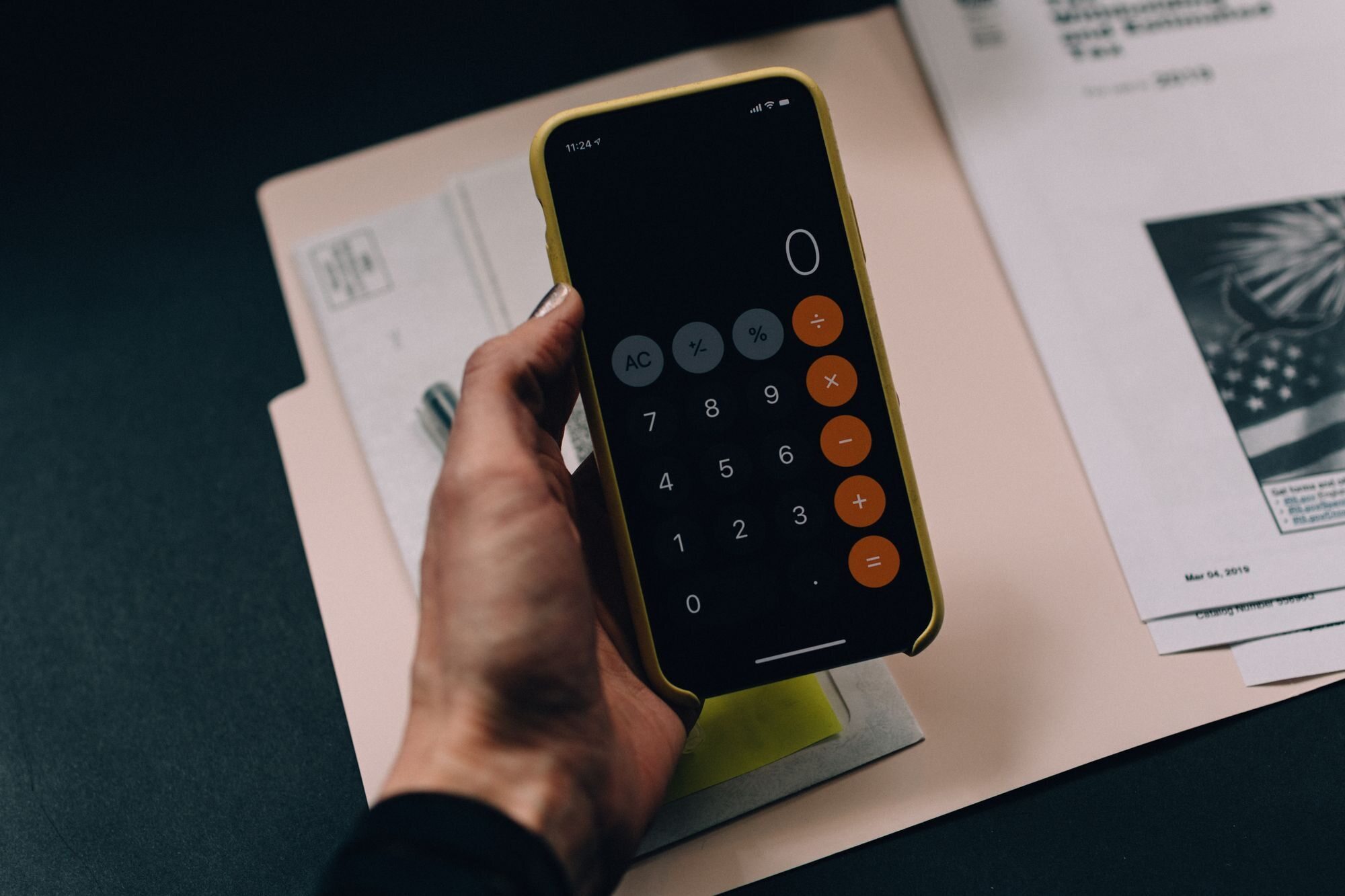Introduction
Welcome to the world of international money transfers! Whether you’re sending money to a family member overseas, paying for goods or services abroad, or supporting a loved one studying abroad, understanding how to navigate this process is crucial. International money transfers allow you to securely and conveniently send money across borders, ensuring it reaches its destination safely.
In this guide, we will walk you through the essential steps involved in making an international money transfer. From choosing the right service provider to initiating the transfer and tracking its progress, we’ll cover all the necessary information you need to ensure a smooth and reliable transaction.
It’s important to note that each country may have its own regulations and requirements when it comes to international money transfers. Therefore, while this guide provides a general overview of the process, it’s always recommended to check the specific regulations of the country you’re sending money to or receiving money from.
Before we dive into the details, it’s important to understand that international money transfers involve various factors, including exchange rates, fees, and processing times. By familiarizing yourself with these aspects, you’ll be better equipped to make informed decisions and maximize the value of your transfer.
Without further ado, let’s get started on our journey to learn how to efficiently and securely transfer money internationally!
Understanding the Basics of International Money Transfers
Before delving into the process of making an international money transfer, it’s essential to have a solid grasp of the fundamental concepts. Let’s explore the key components that make up an international money transfer:
Currency Exchange: When you send money internationally, it needs to be converted into the local currency of the recipient’s country. Currency exchange rates fluctuate and can impact the final amount received by the recipient.
Transfer Fees: Service providers charge fees for facilitating international money transfers. These fees can vary depending on the provider and the amount being transferred.
Transfer Speed: The time it takes for an international money transfer to reach its destination can vary. Some transfers are completed within a few minutes, while others may take a few business days.
Transfer Limits: Certain service providers may have limits on the amount of money you can send in a single transfer or within a specific time frame. These limits are in place to comply with regulatory requirements.
Security: Ensuring the safety and security of your funds during an international money transfer is paramount. Reputable service providers utilize encryption and other security measures to protect your personal and financial information.
Now that you have a basic understanding of the key elements involved in international money transfers, it’s time to move on to the next step: choosing the right service provider. Selecting a reputable and reliable provider will ensure a smooth and secure transfer process.
Choosing the Right Service Provider
When it comes to international money transfers, selecting the right service provider is crucial to ensure a seamless and secure transaction. With numerous options available, it’s important to consider the following factors when making your choice:
Reputation and Trustworthiness: Look for service providers with a solid reputation and positive customer reviews. Trustworthiness is key when entrusting your hard-earned money to a third party.
Transfer Fees and Exchange Rates: Compare the fees and exchange rates offered by different service providers. While some may advertise low fees, they may compensate with unfavorable exchange rates. It’s essential to find a balance between affordable fees and competitive exchange rates.
Transfer Speed: Determine how quickly you need the funds to reach the recipient. Some service providers offer expedited transfers for an additional fee, while others may prioritize speed as part of their standard service.
Accessibility and Convenience: Consider the accessibility and convenience of the service. Do they offer user-friendly online platforms or mobile apps for easy transfers? Can you access customer support if needed? Choose a provider that aligns with your preferences and requirements.
Regulatory Compliance: Ensure the service provider is licensed and adheres to the applicable regulations in both your country and the recipient’s country. This helps safeguard your funds and ensures compliance with anti-money laundering (AML) and know your customer (KYC) policies.
Customer Support: Supporting customers throughout the transfer process is essential. Choose a service provider that offers reliable customer support channels, such as phone, email, or live chat, to assist you with any questions or concerns that may arise.
By carefully considering these factors, you can make an informed decision and choose a service provider that meets your specific needs. Once you’ve selected the right service provider, it’s time to set up your account and proceed with the international money transfer process.
Setting Up Your Account
Before you can initiate an international money transfer, you’ll need to set up an account with your chosen service provider. This process typically involves the following steps:
Registration: Visit the service provider’s website or download their mobile app to start the registration process. You’ll typically be required to provide personal information such as your name, address, contact details, and sometimes your social security number or tax identification number.
Verification of Identity: To comply with regulations and prevent fraudulent activities, most service providers require you to verify your identity. This may involve providing a copy of your government-issued identification document, such as a passport or driver’s license. Some providers may also require proof of address.
Creating a Username and Password: Choose a unique username and a strong password to secure your account. Make sure to use a combination of uppercase and lowercase letters, numbers, and symbols to enhance security.
Two-Factor Authentication: To add an extra layer of security, consider enabling two-factor authentication (2FA) for your account. This typically involves receiving a unique verification code via SMS, email, or a dedicated authentication app when logging in or initiating a transaction.
Bank Account or Payment Method Setup: Link your bank account or specify a payment method to fund your international money transfers. This may involve providing your bank account details or adding a credit or debit card to your account.
It’s important to thoroughly review and understand the terms and conditions of the service provider before completing the account setup. Familiarize yourself with any fees, policies, or limitations related to your account and transactions.
Once your account is successfully set up, you’re ready to move on to the next steps in the international money transfer process, including verifying exchange rates and fees and initiating the transfer.
Verifying Your Identity
Verifying your identity is an essential step in the international money transfer process. Service providers have a responsibility to comply with regulations to prevent fraud, money laundering, and other illegal activities. Here’s what you can expect when verifying your identity:
Document Submission: The service provider will likely require you to submit valid identification documents to verify your identity. This typically includes a government-issued ID, such as a passport, driver’s license, or national ID card. Some providers may also ask for additional documents, such as proof of address or a recent utility bill.
Upload or In-Person Verification: Service providers may offer different methods for identity verification. Some allow you to upload scanned copies or photos of your identification documents directly through their website or mobile app. Others may require you to complete the verification process in person at a physical location or through video call.
Data Privacy and Security: Rest assured that reputable service providers prioritize data privacy and security. They employ encryption technology and adhere to strict privacy policies to protect your personal information. Be cautious when sharing personal data and only provide information to trusted and authorized service providers.
Processing Time: Identity verification typically takes a certain amount of time, depending on the service provider and their verification procedures. It’s essential to start the verification process well in advance to avoid any delays in initiating your international money transfer.
Verifying your identity is a crucial step to ensure the security and legality of international money transfers. By complying with these requirements, you contribute to the overall integrity of the financial system and help protect yourself and others from potential fraud.
Once your identity is successfully verified, you can proceed with the next steps in the international money transfer process, such as determining the exchange rate and fees applicable to your transfer.
Determining the Exchange Rate and Fees
When it comes to international money transfers, understanding the exchange rate and fees is crucial to ensure you get the best value for your money. Here’s what you need to know:
Exchange Rate: The exchange rate is the rate at which one currency is converted into another. Exchange rates constantly fluctuate due to market conditions. It’s important to check the current exchange rate before initiating your transfer to understand how much money will be received in the recipient’s currency.
Provider’s Exchange Rate: Service providers may offer different exchange rates, which can impact the final amount received by the recipient. It’s important to compare exchange rates between providers and choose one that offers a competitive rate.
Transfer Fees: Service providers charge fees for facilitating international money transfers. These fees can vary depending on the provider, the amount being transferred, and other factors. Be sure to review the fee structure of your chosen service provider to understand how much you will be charged.
Transparent Fee Disclosure: Reputable service providers are transparent about their fees. They will provide clear information on their website or mobile app regarding the fees associated with international money transfers. Take the time to review and understand the fee structure to avoid any surprises.
Hidden Costs: While most service providers strive to be transparent, it’s important to be mindful of any potential hidden costs. These can include intermediary bank fees, correspondent bank fees, or fees imposed by the recipient’s bank. Check with your service provider to understand if there are any additional costs associated with your transfer.
Calculating the Total Cost: To determine the total cost of your international money transfer, you’ll need to consider both the exchange rate and the fees. Calculate the amount you want to send, taking into account the provider’s exchange rate and any applicable fees.
By understanding the exchange rate and fees associated with international money transfers, you can make informed decisions about the transfer amount and choose a service provider that offers a competitive rate and reasonable fees.
Once you have determined the exchange rate and fees, it’s time to proceed with initiating the international money transfer with the service provider of your choice.
Initiating the Transfer
After setting up your account, verifying your identity, and determining the exchange rate and fees, it’s time to initiate the international money transfer. Here are the steps to follow:
1. Login to Your Account: Access your account on the service provider’s website or mobile app using your username and password.
2. Start a New Transfer: Look for the option to start a new transfer or send money internationally. Depending on the provider, this may be labeled differently, such as “Send Money” or “Transfer Funds”.
3. Choose the Sending and Receiving Currencies: Select the currency you will be sending and the currency the recipient will be receiving. Ensure the accuracy of these selections as it will impact the conversion process.
4. Enter the Transfer Amount: Input the amount of money you wish to send. The system may provide a real-time conversion to show the equivalent amount in the recipient’s currency.
5. Review the Exchange Rate and Fees: Verify the exchange rate and any applicable fees associated with your transfer. Ensure that you understand the total cost of the transfer before proceeding.
6. Provide Recipient Information: Enter the recipient’s details, including their name, contact information, and the bank account or payment method they will use to receive the funds. Double-check the accuracy of this information to avoid any delays or errors.
7. Confirm and Review: Take a moment to review all the details of the transfer, including the transfer amount, exchange rate, fees, and recipient information. Make any necessary changes or modifications before proceeding.
8. Verify Payment Method: If you haven’t already linked a payment method to your account, you may be prompted to do so at this stage. Follow the instructions provided to ensure a smooth and successful transaction.
9. Confirm and Initiate the Transfer: Once you are satisfied with all the information provided, confirm your transfer and initiate the transaction. The service provider will typically provide a confirmation screen or reference number for your records.
10. Track the Transfer: After initiating the transfer, you may have the option to track its progress. Some service providers offer real-time updates, allowing you to monitor when the funds are sent and received.
Each service provider may have slightly different steps or terminology for initiating an international money transfer, but the general process remains consistent. Follow the prompts and instructions provided by your chosen service provider to ensure a successful transfer.
Once the transfer is initiated, you will receive a confirmation and can expect the funds to be processed and delivered to the recipient based on the transfer speed and processing times offered by the service provider.
Providing Recipient Information
When initiating an international money transfer, it’s important to provide accurate and complete recipient information to ensure a smooth and successful transaction. Here are the key details you’ll typically need to provide:
Recipient’s Full Name: Enter the recipient’s full legal name exactly as it appears on their identification documents. This helps ensure that the funds are correctly received and verified.
Contact Information: Provide the recipient’s contact details, including their phone number and email address. This allows the service provider to communicate with the recipient regarding the transfer and any additional instructions or notifications.
Bank Account Details: If the recipient will be receiving the funds in their bank account, provide the necessary bank account details. This typically includes the recipient’s bank name, account number, and routing or IBAN number. Double-check the accuracy of these details to avoid any delays or misdirected transfers.
Payment Method: In some cases, the recipient may receive the funds through alternative payment methods, such as mobile wallets or prepaid cards. If this is the case, provide the relevant information for the chosen payment method to ensure a successful transfer.
Recipient’s Address: Depending on the service provider and destination country, you may be required to provide the recipient’s address. This can help verify their identity and ensure the funds are delivered to the correct location.
Recipient’s Identification Documents: In certain situations, the recipient may be required to present their identification documents to receive the funds. Ensure that the recipient is aware of any identification requirements and has the necessary documents readily available.
It’s crucial to double-check all recipient information for accuracy before initiating the transfer. Even minor errors in names, account numbers, or contact details can result in delays or issues with the transfer. If you are unsure about any specific requirements or formatting, consult the service provider’s guidelines or contact their customer support for assistance.
By providing the recipient’s information accurately and completely, you help ensure a smooth and efficient transfer process, allowing the funds to reach the intended recipient without any complications.
Confirming and Reviewing the Transfer Details
Before finalizing an international money transfer, it’s crucial to confirm and review all the details to ensure accuracy and avoid any errors or delays in the transaction. Here’s what you should do:
1. Review the Transfer Amount: Double-check the amount you are sending to ensure it matches your intended transfer. Take into account any fees or exchange rate conversions that may affect the final amount received by the recipient.
2. Verify the Recipient’s Information: Ensure that you have entered the recipient’s name, contact details, and account information correctly. Any mistakes in this information can result in the funds being redirected or delayed.
3. Check the Exchange Rate and Fees: Confirm that you are comfortable with the exchange rate applied to your transfer and any associated fees. Compare these rates and fees with other providers to ensure you are getting a competitive offer.
4. Review the Transaction Reference: Take note of the reference number or transaction ID provided by the service provider. This reference will be useful for tracking the transfer or contacting customer support, if needed.
5. Evaluate the Transfer Speed: Consider the estimated time it will take for the funds to reach the recipient. If time is of the essence, ensure that the transfer speed meets your requirements and aligns with any deadlines or urgent needs.
6. Confirm the Payment Method: Verify that the payment method you have selected, such as a linked bank account or credit card, is accurate and ready to be used for the transfer.
7. Read and Accept the Terms and Conditions: Familiarize yourself with the service provider’s terms and conditions. These details may include information about cancellation policies, refund procedures, and any additional terms that may apply to your specific transfer.
8. Take Screenshots or Save Confirmations: It’s a good practice to take screenshots or save confirmation emails related to the transfer. These documents will serve as proof of your transaction and can be useful for reference or dispute resolution purposes.
By carefully reviewing and confirming all the transfer details, you can minimize the risk of errors and ensure a successful transaction. Once everything has been thoroughly reviewed and verified, you can proceed with initiating the payment and sending the funds to the recipient.
Paying for the Transfer
Once you have confirmed and reviewed the transfer details, the next step in the international money transfer process is making the payment. Here’s what you need to know:
1. Select the Payment Method: Choose the payment method you want to use to fund the international money transfer. This can include options such as a linked bank account, credit or debit card, or other specialized payment services offered by the service provider.
2. Ensure Sufficient Funds: If you are using a bank account or a prepaid card to make the payment, ensure that you have sufficient funds available to cover the transfer amount and any associated fees. Make any necessary arrangements or transfers to avoid any payment-related issues.
3. Follow the Payment Instructions: The service provider will provide instructions on how to complete the payment. This may involve providing your payment details, such as card number or bank account information, and any additional security measures, like card verification codes or one-time passcodes.
4. Verify Payment Details: Double-check all the payment details you have provided, including the payment method, account numbers, and any additional information required. Accuracy is crucial to ensure a successful payment.
5. Complete the Payment: Follow the prompts provided by the service provider to finalize the payment. This may involve clicking a “Confirm” or “Proceed” button, entering a unique code, or authorizing the transaction through a secure authentication process.
6. Note Payment Confirmation: After completing the payment, you may receive a payment confirmation screen or email. Save this confirmation and make a note of the transaction reference or receipt number for future reference or in case of any issues or inquiries.
7. Monitor the Payment: Keep an eye on your payment method, such as your bank account or credit card statement, to ensure that the payment goes through successfully. If there are any unexpected issues or discrepancies, contact the service provider’s customer support for assistance.
It’s important to note that the time it takes for the payment to be processed and reflected in your account can vary. Some transfers may be instant, while others may take a few business days. Make sure to consider the payment processing time when initiating the transfer, particularly if there is a specific time frame or urgency involved.
By following the payment instructions provided by your chosen service provider and ensuring accuracy in the payment details, you can successfully pay for your international money transfer and move on to tracking its progress.
Tracking the Transfer
Once you have completed the payment for your international money transfer, you may want to track its progress to ensure that the funds reach the intended recipient. Here are the steps to track your transfer:
1. Confirmation and Reference Number: Note down the confirmation or transaction reference number provided by the service provider when you initiated the transfer. This unique identifier will be essential for tracking the transfer.
2. Check Transfer Status: Visit the service provider’s website or access their mobile app, and navigate to the “Transfer History” or “Transaction Status” section. Enter the required details, such as the reference number and possibly other information like your name and contact details, to retrieve the current status of your transfer.
3. Update Interval: Keep in mind that service providers may have different update intervals for tracking transfers. While some providers offer real-time tracking, others may have a delay in updating the transfer status. Be patient and check periodically for the most up-to-date information.
4. Track Online or Contact Customer Support: Depending on the service provider, you may be able to track your transfer’s progress directly online. This can include details such as the date and time of initiation, transfer status (e.g., processing, completed), and estimated delivery or arrival time. If you cannot find the tracking information online, reach out to the service provider’s customer support for assistance.
5. Receive Notifications: Some service providers may send you notifications via email or SMS to update you on the progress of your transfer. These notifications can provide valuable information and help you stay informed about any important changes or updates regarding your transaction.
6. Document and Save Details: It’s important to document and save all the tracking details, including timestamps, status updates, and any relevant transaction history. This documentation can serve as proof of your transfer and be useful in case of any inquiries or disputes.
7. Be Aware of Transfer Speed: Keep in mind that the transfer speed may vary depending on factors such as the destination country, the service provider’s processing times, and any intermediary bank involvement. If the transfer takes longer than expected, reach out to the service provider’s customer support for clarification and assistance.
8. Verify Receipt with the Recipient: Once the transfer is marked as completed, it’s a good practice to verify with the recipient that they have received the funds. This ensures that the transaction was successful and allows you to address any issues promptly, if necessary.
By tracking your transfer, you can stay informed about its progress and have peace of mind knowing that the funds are on their way to the recipient. If you have any concerns or questions during the tracking process, don’t hesitate to reach out to the service provider’s customer support for assistance.
Receiving Confirmation of the Transfer
After initiating an international money transfer, it’s important to receive confirmation that the transfer has been successfully completed. Here’s what you can expect regarding the confirmation process:
1. Notification from the Service Provider: Depending on the service provider, you may receive a confirmation email or message indicating that the transfer has been processed and completed. This notification typically includes details such as the transaction reference number, transfer amount, exchange rate, and any applicable fees.
2. Reviewing the Confirmation: Take the time to carefully review the confirmation message or email. Verify that all the information mentioned is accurate, including the transfer amount, recipient details, and transaction reference number. If you notice any discrepancies or issues, contact the service provider’s customer support immediately.
3. Saving the Confirmation: It’s important to save the confirmation message or email for your records. This documentation serves as proof of the completed transfer and can be helpful in case of any inquiries or disputes in the future. Keep the confirmation in a secure place where you can easily access it if needed.
4. Notifying the Recipient: Once you have received confirmation of the transfer, it’s a good practice to notify the recipient that the funds have been sent. Provide them with relevant details such as the transfer reference number, expected delivery date, and any instructions they may need to follow to access the funds.
5. Expectation of Recipient Confirmation: While you, as the sender, receive confirmation of the transfer, the recipient may also receive a confirmation from their end. This confirmation may come directly from the recipient’s bank or the service provider if they are required to provide additional information or complete any steps to access the funds.
6. Addressing Issues or Discrepancies: If you encounter any issues or notice any discrepancies with the confirmation or the transfer itself, promptly reach out to the service provider’s customer support. They can investigate the matter and provide you with the necessary assistance or resolutions.
Receiving confirmation of the transfer is an important step in the international money transfer process. It provides assurance that the funds have been successfully sent and allows you to share the confirmation with the recipient to facilitate a smooth receipt of the funds. By saving and documenting the confirmation, you maintain a record of the transaction and can address any potential discrepancies if they arise.
Reaching Out to Customer Support if Needed
During the international money transfer process, it’s important to know that customer support is available to assist you with any questions, concerns, or issues that may arise. Here are some situations in which you may want to reach out to customer support:
1. Clarifying Transfer Details: If you have any questions or need clarification regarding the transfer process, exchange rates, fees, or transfer limits, customer support can provide the necessary information to address your queries.
2. Technical Assistance: In the event of technical difficulties accessing your account, initiating the transfer, or encountering errors during the payment process, customer support can guide you through the steps to resolve the issue.
3. Tracking and Delivery Inquiries: If you have concerns or need updates regarding the tracking or delivery of the transfer, customer support can provide you with the current status, estimated arrival time, or any necessary follow-up actions.
4. Disputed Transactions: In case of any dispute, unauthorized transactions, or suspected fraud, customer support can guide you through the process of reporting the issue and initiating a resolution. Make sure to provide any relevant documentation or evidence to support your claim.
5. Payment Issues: Should you encounter any problems with the payment method, such as a failed transaction, incorrect charges, or delays in processing the payment, customer support can investigate the matter and provide assistance in resolving the issue.
6. Compliance and Regulatory Questions: If you have any questions or concerns about compliance with regulations, identity verification, or any other legal aspects of the international money transfer, customer support can provide guidance and ensure you are fully informed.
7. Refunds and Cancellations: If you need to cancel or modify a transfer or want to inquire about refund policies, customer support can inform you of the options available and guide you through the necessary steps.
8. General Inquiries: For any other general inquiries, customer support is there to assist you. They can provide information on services, explain the terms and conditions, and address any concerns you may have.
When reaching out to customer support, be prepared to provide relevant details such as your account information, transfer reference number, and any supporting documents to expedite the support process. Keep records of your interactions, including the names of customer support representatives and the dates and times of conversations or emails for future reference.
Remember, customer support is there to assist you throughout the international money transfer process. Don’t hesitate to reach out for help whenever needed to ensure a smooth and successful transaction.
Additional Precautions and Tips for International Money Transfers
When conducting international money transfers, it’s important to take additional precautions and follow certain tips to enhance the security and efficiency of your transactions. Here are some key recommendations:
1. Verify the Service Provider: Before initiating a transfer, ensure that the service provider is reputable and reliable. Research customer reviews, check for any regulatory certifications or licenses, and verify their track record in handling international money transfers.
2. Be Mindful of Scams: Be cautious of unsolicited emails, calls, or messages claiming to offer unbelievable exchange rates or asking for sensitive information. Legitimate service providers will never ask you to provide personal or financial information via insecure channels.
3. Double-Check Recipient Details: Carefully enter the recipient’s information to avoid any errors or misdirected transfers. Confirm the spelling of the recipient’s name, contact details, and bank account information to ensure accurate delivery of the funds.
4. Stay Informed about Exchange Rates: Keep an eye on current exchange rates and compare them between service providers to find the most favorable terms. Consider using trusted financial news sources or currency converter apps to stay up-to-date.
5. Use Secure and Trusted Payment Methods: Opt for reputable payment methods such as bank transfers or trusted third-party payment systems. Avoid using unfamiliar or unsecured payment methods that may put your financial information at risk.
6. Be Aware of Transfer Limits: Familiarize yourself with any transfer limits imposed by the service provider or regulatory authorities. Larger transfers may require additional documentation or compliance processes, so plan accordingly.
7. Consider Transfer Timing: International money transfer rates and fees can vary at different times of the day or week. Assess if there are any particular timeframes that offer better rates or lower fees, and plan your transfer accordingly.
8. Keep Records and Documentation: Save confirmation emails, transaction references, and any other relevant documentation related to your international money transfers. These records will be valuable for record-keeping and reference purposes in the future.
9. Be Aware of Tolerance for Exchange Rate Fluctuations: Exchange rates can fluctuate rapidly. If you have a specific budget or amount that needs to be received by the recipient, assess your tolerance for exchange rate fluctuations and consider using tools such as forward contracts or limit orders to secure a specific rate.
10. Regularly Update Account and Contact Information: Keep your account and contact information updated with the service provider to ensure smooth communication and transaction processing. Update your email address, phone number, and other important details whenever necessary.
By following these additional precautions and tips, you can minimize potential risks and optimize the efficiency and security of your international money transfers. Stay vigilant, stay informed, and choose reputable service providers to make your transfers with confidence.
Conclusion
International money transfers play a vital role in today’s globalized world, allowing individuals and businesses to send and receive funds across borders quickly and securely. By understanding the essential steps involved in making an international money transfer, you can navigate the process with confidence and ensure a successful transaction.
In this guide, we covered the basics of international money transfers, from choosing the right service provider to verifying your identity and determining exchange rates and fees. We explored the importance of providing accurate recipient information, reviewing transfer details, and tracking the progress of your transfer.
We also discussed the significance of receiving confirmation, reaching out to customer support when needed, and taking additional precautions to protect yourself from scams and ensure the security of your transfers.
Remember, each international money transfer may have specific requirements and regulations, so it’s important to familiarize yourself with the relevant guidelines for your particular transfer. Additionally, staying informed about exchange rates, using trusted payment methods, and keeping records of your transfers can help you make informed decisions and maintain control over your financial transactions.
By following these guidelines and recommendations, you can navigate the international money transfer process more effectively and ensure that your funds reach their intended destination securely and efficiently.
Remember to choose a reputable service provider, review all transfer details carefully, and keep communication lines open with customer support if you have any questions or concerns along the way.
As you continue to engage in international money transfers, stay informed about industry developments and best practices. By doing so, you can adapt to changing regulations, emerging technologies, and evolving market conditions while maximizing the value and security of your international money transfers.

























